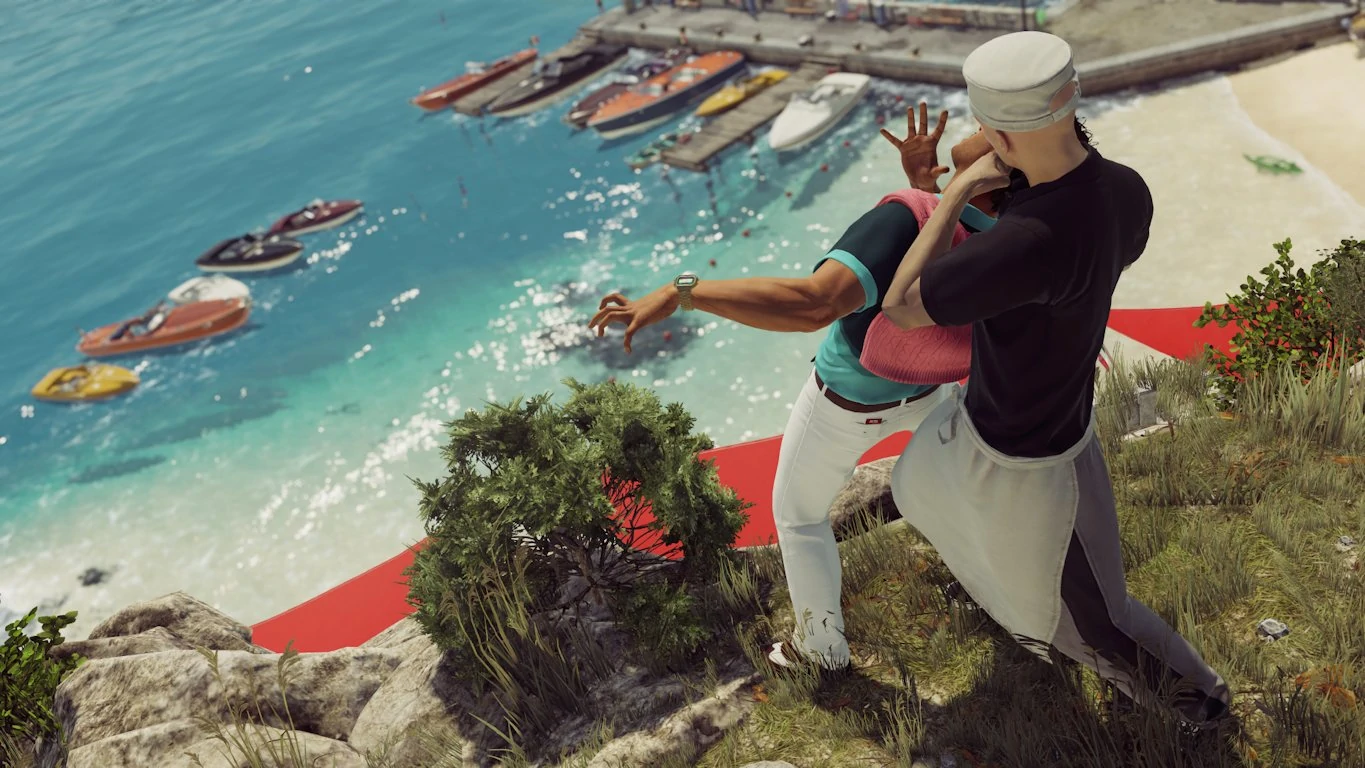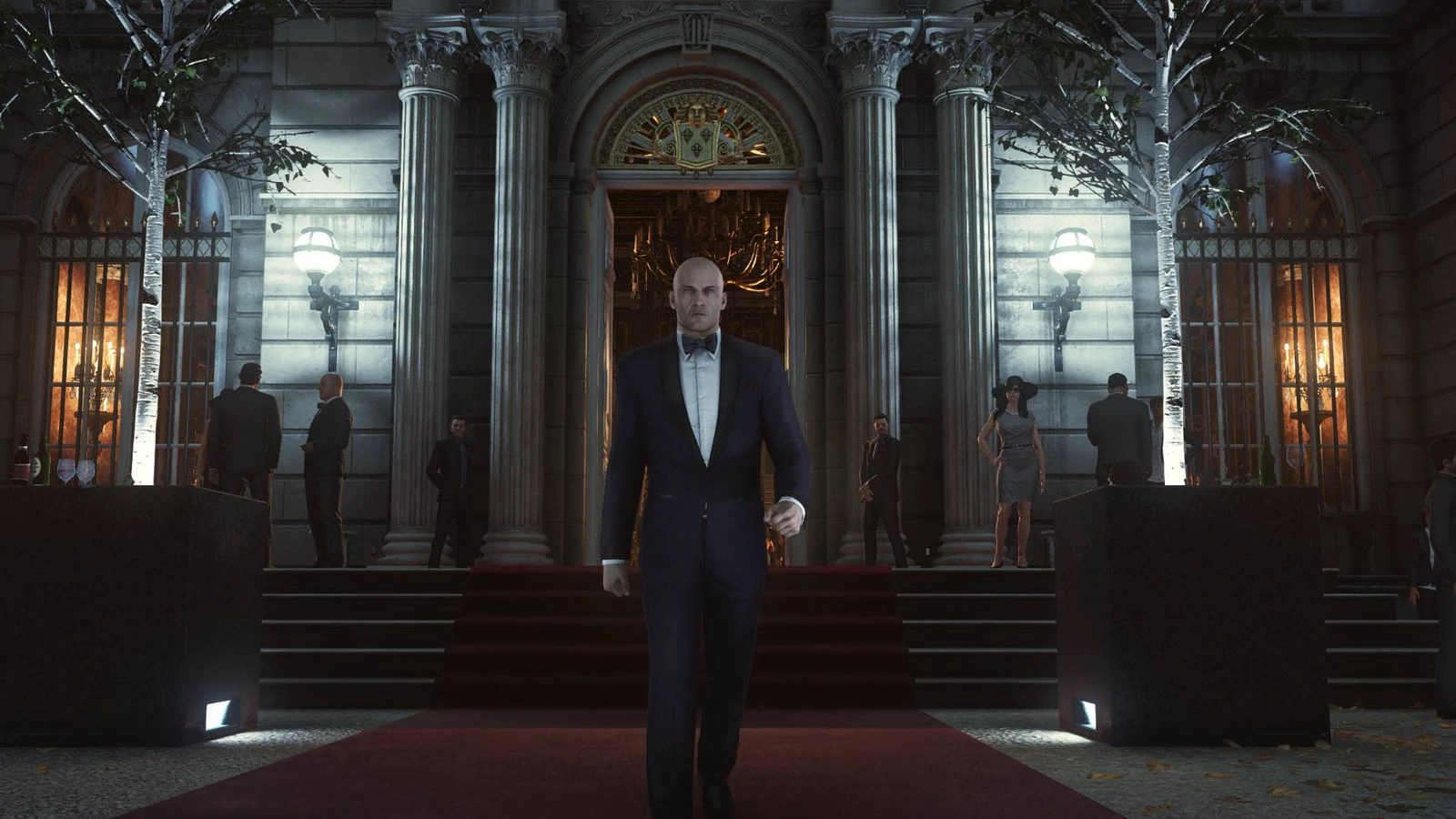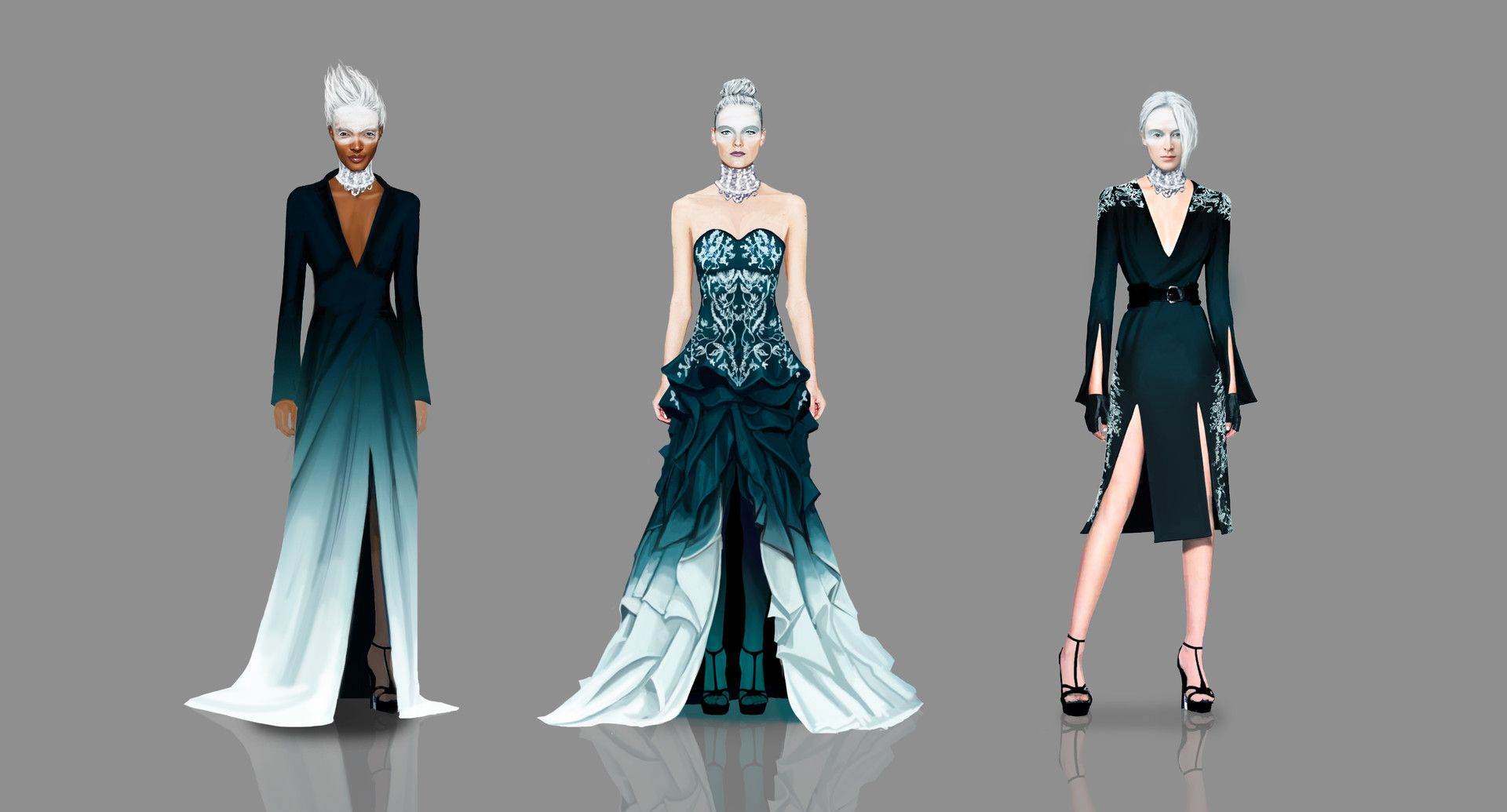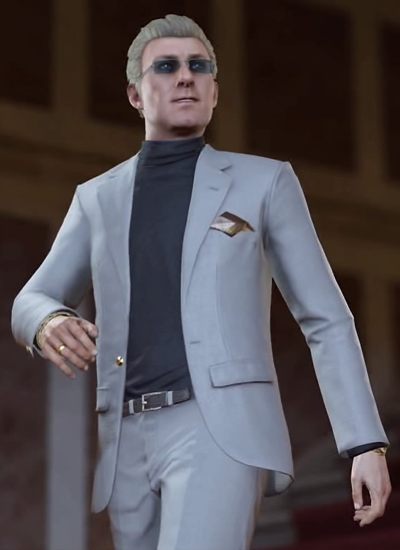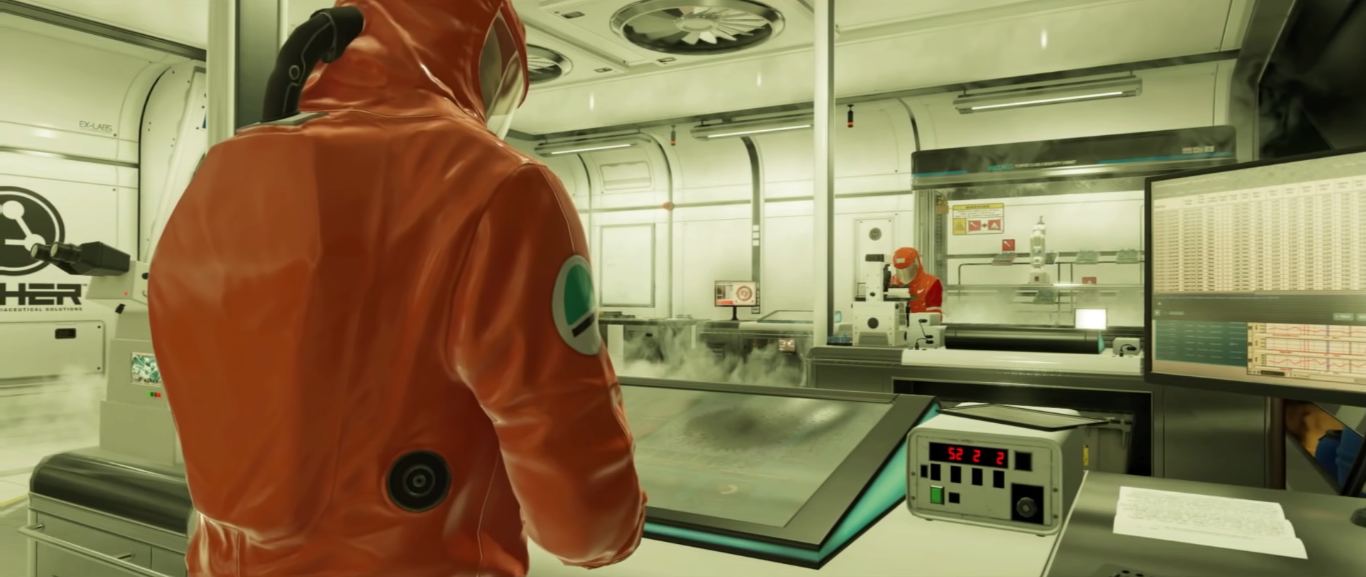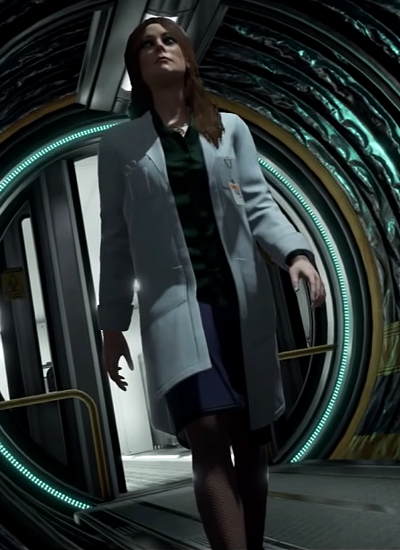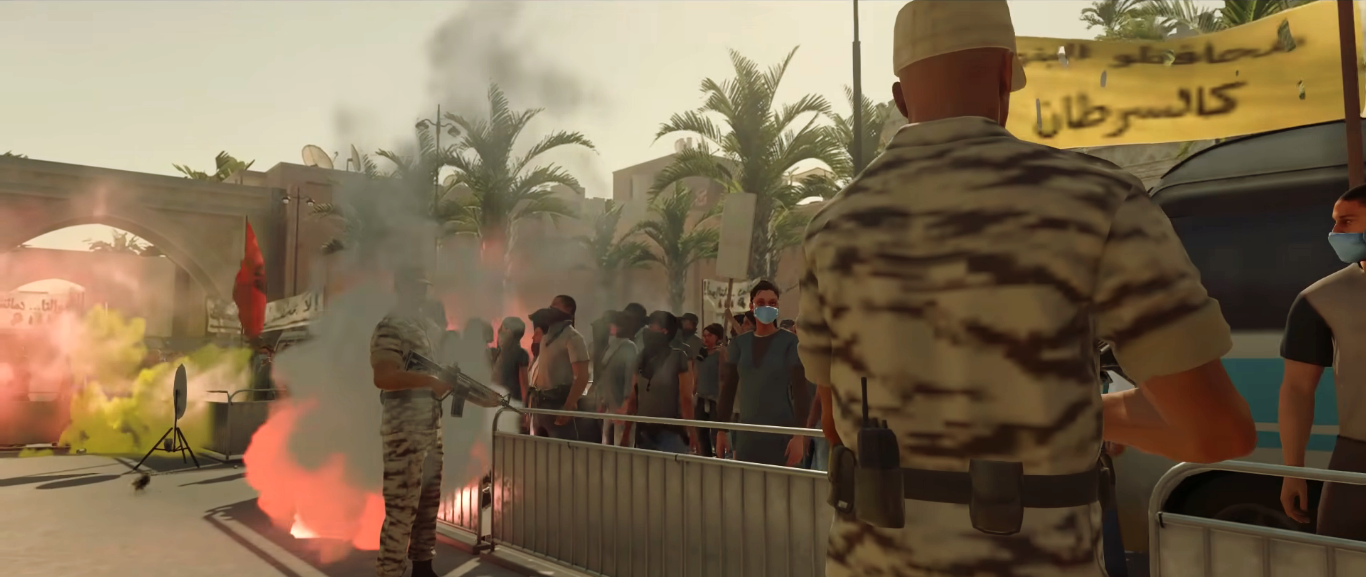
The World of Assassination trilogy is a set of three couture games in a series that previously had to make do with ready-to-wear. It arrives in the next-gen paradise of 2016, an era of reflective mirrors, countable hairs, and sweaty pores. Ambient lighting beams and glows at silky-smooth frame rates. Clean, neue-Euro UI sets a sleek, sophisticated mood. And while fabric still poses a challenge, games can now render textiles that Codename 47’s R&D team could only dream of. IOI has never had more technical freedom, and 47’s missions have never felt so touchably real.
When it comes to the story, it’s both a reboot and it isn’t. It concerns itself deeply with the mark that 47 has left on the world, and the ways higher powers have used him to make it better and worse. That means it acknowledges his greatest hits from earlier games, but knows that after Absolution, it’s time for a hard reset. The reboot washes off 47’s exhaustion, grime, and scars, portraying him as a graceful shadow instead of a murder machine. He’s so polished, he looks like no one’s laid a finger on him, because this 47 is so skilled, he’d never give them the chance. We see the veteran agent at the peak of his experience, a hunter who’s honed his disappearing act for fifteen years. He even drowns his targets in toilets with methodical calm. If you choose to make him, that is. After all, he’s under your control.
At this point, 47 has moved beyond petty clients and petty villains. Entire organizations vie for him. His marks start wars and sell economies into ruin. Clothing is one of society’s most powerful symbols of class, and the reboot trilogy has worked up an appetite for the rich. Diana says so herself: when 47 steals an actor’s clothes during training, she remarks that “people do tend to see uniforms, not faces,” and launches these themes into the foreground. With the stakes this high, 47’s disguises will no longer hinge on our suspension of disbeliefs, but his targets’ arrogance. They treat their staff with such indifference that they can’t tell them apart, and they rely on their security teams instead of vetting strangers themselves. They’ve become the choreographers in the dance of their downfall. They don’t bother to look past their blind spots until it’s too late.
These are big themes to chew on, and IOI has taken a “quality over quantity” approach to each of the trilogy’s entries. For their comparatively short level counts, there’s a lot to dig into. Because of that, I’m going to limit the rest of this project to our leads, the main targets, and a few relevant NPCs. While I find many of the extra missions and Elusive Targets interesting, this project is already long, and I’d repeat myself a lot. Hitman’s costumes will show us over the next three games that everything is connected on the chessboard of dominance. Where power goes, aesthetic follows, because power needs to assert itself, to separate itself from the have-nots, to signal to its peers. Unfortunately for the ones in power, they’re not counting on a clone from backwater Romania speaking their language better than any of them.

After a window into 47’s audition for the ICA, the trilogy’s first proper mission hits the ground running. In the present, someone has leaked a NOC list of MI6 agents, and information brokers are about to auction it off at a fashion show. The fabled department itself hires 47 to drop in and retire the two heads of IAGO, the intelligence ring selling the list. It’s a classic spy movie setup, one that delivers on the aspirations of the St. Petersburg missions all those years ago. It’s also foreshadowing. But we’ll learn more about that later. 47 and Diana are major-league now. It’s time to step onto the world stage.
Already, we’ve got two intriguing details to unpack. First, 47 is in a tuxedo! He’s not starting in his suit anymore. At this stage, his signature look won’t get him as far as he needs it to. The situations are too specific, and guards are too aware. 47 will continue this for the rest of the trilogy, choosing unique starting outfits as he adapts to the intensifying risk. Second, we’re in Paris, the city we associate most in Western culture with fashion and rarefied taste. For many, the city has become synonymous with beauty. When we imagine it, we imagine glamour, especially the kind that’s out of reach. The game shakes the player by the collar to get them to take the hint: the ugliest human behavior lurks in the garden of the most beautiful.
A note from the Hitman concept art says that the Sanguine collection was designed around the theme of an iceberg: a public front with a greater threat lurking beneath. It’s a coy wink at the purpose behind hosting the event, and we see it reflected in the house’s owner, Viktor Novikov. Viktor coordinates with his collection in a pale suit and dark turtleneck, classic and unimpeachable from a fashion standpoint. Sure, we could take a cheap shot at him wearing sunglasses indoors, but that doesn’t count as eccentric for a fashion baron or oligarch.
He’s far from unimpeachable, though, isn’t he? In spy stories, we associate a suit and turtleneck with Europeans, particularly Eastern Europeans, particularly evil ones. That may be thanks to figures like The Man from U.N.C.L.E.’s Illya Kuryakin, who imbued it with mysterious Russian-ness in the Sixties Western mind. Now, Illya may not have been a villain - in fact, it was remarkable for Cold War American media to feature a heroic Russian character. But the image stuck, and it became a go-to for enigmatic men who operated outside the norms of American business. It’s also not the sort of sartorial choice that would be lost on the ultra-image-conscious guests at a high fashion show. The ones there to attend the auction would realize that Viktor’s getup makes him look like a Bond villain, and they’d probably find it hilarious.
In an ironic twist, Viktor has no interest in being the cloak-and-dagger mastermind that his clothes suggest he is. For the most part, his NPC cycle keeps him busy with the fashion show, and ingame dialogue reveals that he’d rather do it full-time. He only keeps his finger in the IAGO pie because his history of fraud and extortion prevents him from ever going straight. The boss of one of Europe’s oldest couture labels can’t escape his criminal past, and his turtleneck can’t escape its inauspicious mystique.
And the intelligence community has noticed. Diana’s intel implies that Viktor only bankrolls IAGO and serves as its figurehead. His partner, Dalia Margolis, does all the dirty work. She’s even planning to kill him now that his past has become a liability. For the premiere, Dalia has chosen a simple, stylish dress in the collection’s color scheme, with ice-crystal statement jewelry. While it matches the Sanguine line - note the logo on the belt - it’s not as flashy as the runway gowns, which suits her role as a former model who’s stepped back from the limelight. I’ve never been to a high fashion show, but I wouldn’t be surprised if they had some etiquette about not outdoing what’s on display.
Unlike Viktor, Dalia’s dress doesn’t employ any specific cultural symbols that make us think of spies. It’s glamorous, but so is everyone there. It aligns her more strongly with the fashion side of the business than the intel trade, and that suits her just fine. The more people associate IAGO with Viktor, the more freedom Dalia has to operate in the shadows. It allows her to pursue her own goals - you know if she’d survived long enough to remove Viktor from the picture, she’d have gotten away with it. Viktor’s outfit tries to convince us he’s an information broker. Dalia’s shows us who she really is: an ex-Mossad agent who’s too smart to betray her motives to anyone.
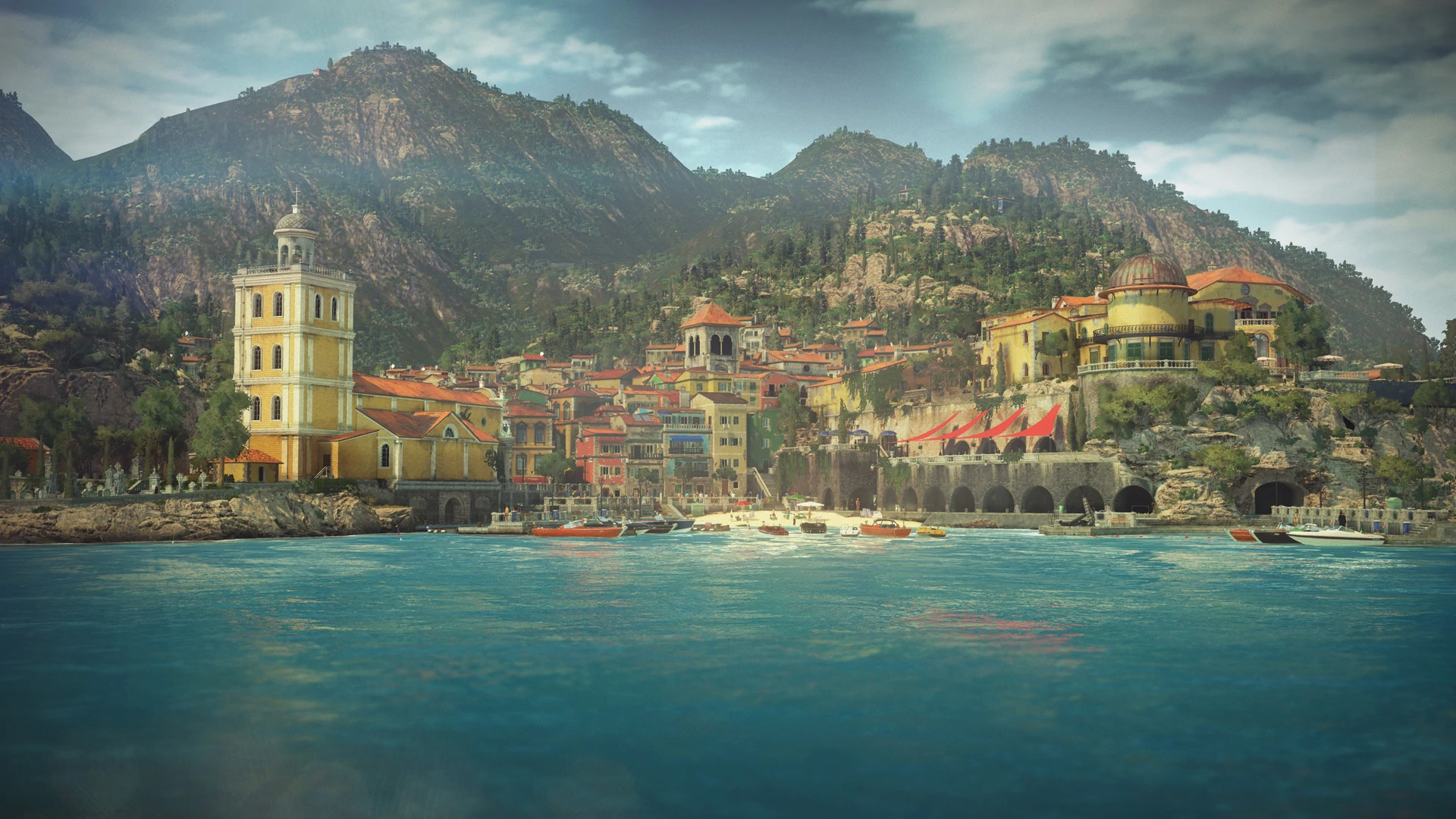
If the Devil works hard, 47 works harder, and there’s no rest for the wicked. As soon as we’re done in Paris, another job comes down the pike. Across the Mediterranean, in Sapienza, Italy, a pharmaceutical conspiracy roils in the sand and sun. Silvio Caruso, the enfant terrible of biotech giant Ether, has created a DNA virus that only kills those it’s sequenced to. A rightfully-freaked shareholder has sent us to the seaside paradise to kill him and destroy the prototype. And I mean “paradise.” Fans see the sprawling town - yes, a whole town! - as a high point of the reboot, with just enough early-series sci-fi hijinks to make it fun. In 2016, at least. It seemed like a cracking plot in those days. To contemplate it now is, to use the technical term, “oof.”
We were sweet summer children then, so 47 can’t poison Silvio with a lethal dose of horse dewormer. However, Ether has been concerned about his experiments for a while, so they’ve sent fellow scientist Francesca De Santis to keep an eye on him. If he goes too far, they’ve authorized her to snuff him and take over his work herself. Our intel notes that she’s so ambitious, she might do it anyway. (You notice Ether doesn’t want to stop the project. They commissioned it, in fact. They just don’t want Silvio to make them look bad. It figures.) From the neck down, Francesca’s design gives us no reason to suspect that she’s capable of this kind of corporate treachery. She’s donned a blouse and a geometric wrap skirt under her lab coat - unusual colors, but otherwise normal for a fortysomething professional. Maybe her strappy heels are impractical for lab work. Some women can just wear shoes that others find uncomfortable. Wish that were me.
Her hair, on the other hand. Francesca, please. Sit down. We need to discuss the violation that your hair presents. Anyone who’s ever taken a chemistry class learns about the value of keeping your hair back. It’s a core lab safety rule. For one of the world’s leading researchers, this seems like a grievous oversight, so much so that I was surprised it didn’t present as an opportunity to kill her.
So why the lapse in judgment? Because she’s sleeping with Silvio’s golf coach, an affair so torrid that it’s interfering with her work. Tousled hair has been a subject of fascination for centuries, because of what it implies about what the bearer has been up to. In the comedies of the Restoration stage, lovers caught in the act were given the stage direction “in disorder,” which may have involved messy hair and clothes. Torii Kotondo’s 1930 woodcut “Morning Hair” drew so much scandal for showing bed head and a comb that it was banned. So far, Francesca’s lack of ethics has helped her get ahead. Now, her new distraction has flown her too close to the sun. If she weren’t so reckless, she could have avoided getting caught up in all this. But like many who hunger for power, she had to have her cake and eat it, too.
Silvio has no such problem. He’s firmly married to his research. He hates women. Really, he hates everyone he feels inferior to. Which is odd, because he dresses like a Ralph Lauren babe magnet, from his shades and polo to his tied sweater in ultra-preppy pink. We associate this outfit so strongly with wealthy, entitled frat boys that that the Internet has even given it a name: the My Dad Is A Lawyer Look. (The quintessential version pairs it with Bermuda shorts, but Silvio’s full-length white pants still fit within the theme.)
Silvio was never one of those boys, though. He was the kid those boys bullied. Twenty-five years later, he’s hell-bent on having the last laugh. It’s easy to forget that, despite his timid tendencies, Silvio’s one of the few reboot targets who’s actually killed someone. He smothered his controlling mother after years of stifled rage, and he plans to sequence his virus to his childhood nemeses. This outsize revenge makes him more of a bully than they ever were, though in his dress sense, some part of him still seeks their approval. He hates them and wants to be them. As they overpowered and humiliated him, he needs to overpower and humiliate in turn. His poor therapist.

If the player eavesdropped on the right conversation in Paris, they learned that IAGO had intel that the Moroccan government was under threat. In A Gilded Cage, we find out that they were right. 47 arrives to a Marrakesh in chaos: Banker Claus Hugo Strandberg has defrauded billions from the Moroccan people, escaped from his prison transport, and taken refuge in the Swedish consulate. The citizens are furious, and forces within the Moroccan Army hope to use the unrest as an opportunity to stage a coup. We’re a far cry from the calm intrigue of Sapienza and Paris. It’s the middle of a takeover! No one has time to worry about how they look.
Except they do. Coups are a time of power changing hands, and to the ones jockeying for that power, image is paramount. It even matters to auxiliaries like Claus, whose only job is to hang around and keep the protests alive. Claus has cleaned up nicely since the merc squad busted him out, donning a light gray suit, blue shirt, and a tie that combines the two. It’s a correct look for a money man, down to the pinstripes, which we’ve associated with finance since banks in 19th century London used them to identify their employees. In it, he embodies the essence of everything we want a bank CEO to be - neat, clean-fingered, professional. He stays behind the glass of his tidy, modern consulate while the city roils outside. He seems, frankly, above it all.
This shot obscures the pinstripes, but they’re there.
With his pale suit, blond hair, and glasses, Claus sits in the same aesthetic family as Viktor Novikov, but they’re playing to very different environments. Viktor made going against the fashion grain his livelihood, so he riffed on traditional suit colors to look modern and hip. The same idea against the backdrop of Moroccan strife? That’s unmistakably colonial, and unmistakably bad news. We’ve seen it time and again - the European out hunting or empire-building, clad in light fabrics to protect them from the heat. Sweden and Denmark did have colonial presences in West Africa, making Claus’ ploy for North African money all the more unsavory. It’s interesting that throughout history, colonial ventures attracted second sons and power-hungry ne’er-do-wells unlikely to succeed at home. Claus is a known embezzler who thought Morocco would be a softer touch, and his outfit suggests that he’s continuing that legacy.
But as I said, Claus just needs to agitate. The army is the main player here, and it gives us one of the game’s most memorable targets in Reza Zaydan. I’m a longtime Jason Isaacs fan - if Reza’s voice sounds familiar, that’s why - and he brings his Zhukov to the table with wicked, grandiose glee. As a would-be dictator, Reza fancies himself a lot of things. Master interrogator. Ladykiller extraordinaire. (In fact, Dalia Margolis may have been one of his conquests. Can you imagine the drama? Scorching highs and lethal lows.) He’s so busy trying to look important, he doesn’t care that a third, unseen force is using him to gain a foothold in the region. Does he know anything about this mysterious benefactor’s goals? No. Does it cross his mind to ask? No. He assumes it’s above his pay grade. Under the massive, ceiling-scraping crown of his peaked cap is a head full of hot air and no clue what’s actually going on.
What? I like uniforms a normal amount.
Militaries have convoluted codes of conduct about when officers are supposed to be in or out of uniform. It’s what muddied the waters with the Russians in Silent Assassin. But on the eve of a coup, it doesn’t matter. The uniform plays a vital role in establishing Reza’s brand image as a leader. On a broad-brush level, the uniform mirrors the photos I found of real Moroccan Army generals - white shirt, black tie, olive suit. We find more grist in the places where the design gets it wrong. For starters, Reza’s cap is missing some of its trim. The pins on his lapels didn’t come up in my research. The fourragère - that braided cord - is a flashy, camera-grabbing gold, and the epaulettes - his shoulder tabs - don’t appear to match any real rank. He’s also sporting a larger ribbon rack than the real generals I found, especially for one rumored to have seen no real combat.
These could be oversights. Or are they? This flavor of creative uniform personalization isn’t unusual for military autocrats. And if we hold with the idea that Reza hasn’t earned his stripes, it makes sense that he’d hold little interest in adhering to his insignia Ps and Qs. Reza doesn’t need to bother with the particulars of rank, or even learn who’s manipulating him, to achieve his goals. He just wants to be the biggest fish in Morocco. In a world full of villains bent on world domination, this petty ambition makes him more realistic, and - dare I say it? - quaint.


